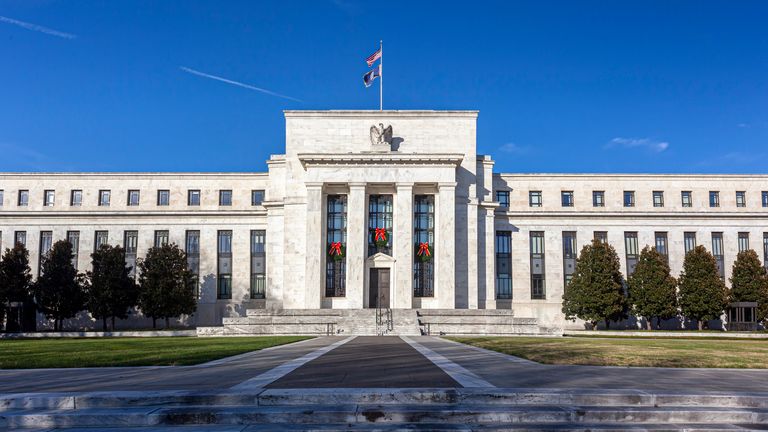The US central bank has imposed its third major interest rate rise in a row.
The Federal Reserve has once again hiked rates by 0.75 percentage points in an effort to curb soaring inflation.
The widely-expected rise will mean more expensive borrowing for the likes of mortgage holders and those paying credit card debt.
American interest rates now stand at 3% to 3.25%, up from 2.25% to 2.5% since the last increase in late July.
It’s just one rise in the central bank’s plan to raise interest rates to 4.4% by the end of 2022 and settle on 4.6% in 2023, it announced on Thursday. Such a rate would be the highest since 2007.
The latest tough stance has been taken in an effort to limit spiralling inflation, which stood at more than 9% in the US, the fastest increase in 40 years. The rises are being made as part of an overall plan to reduce inflation to 2%.
“No one knows if this process will lead to a recession or if so how significant that recession would be”, chair of the Federal Reserve, Jerome Powell, said.
As well as the interest rate announcement, the US central bank, known as the Fed, outlined economic projections.
Gross domestic product (GDP), the measure of the value created through producing goods and services, was projected by Mr Powell to be 0.2% this year and 1.2% next year, down on previous projections.
While US unemployment is near a 50-year low, as demand for workers outpaces the number of people taking up new jobs, the Fed expected it to rise to 4.4% next year in what Mr Powell described as a “softening of labour market conditions”. That demand for workers will have to reduce, he said.
The US housing market will also have to go through a “correction”, Mr Powell said, to get supply and demand into balance and return housing price growth to a more normal pace. Median home prices have soared by nearly 36% since the beginning of the pandemic, despite the cost of mortgages going up and home sales declining.
The move is likely to bring economic pain, but the Fed is betting that it will be shorter and less intense if it takes tougher action now. Job losses are likely to result as loan repayments become more costly for businesses and consumers have less disposable cash.
Achieving that desired soft landing is “very challenging”, Mr Powell said.
The rate had been 0% at the beginning of this year but the Fed has progressively increased the figure across five announcements. The low rate was reached during the pandemic when the Fed wanted borrowing to be cheap for businesses and consumers to remain financially afloat.
Not since the early 1980s has the Fed embarked on such an aggressive monetary tightening campaign.
Prior to Wednesday’s increase, the Fed had already upped rates in June and July by what were, at the time, rises not seen since 1994.
The Fed is just one of many central banks targeting interest rates as inflationary pressures drive the cost of living crises across economies.
On Thursday, the Bank of England is anticipated to also raise its base rate of interest by 0.75% to 2.5%.
It’s a busy week for central bankers as the People’s Bank of China regulator decided to leave interest rates unchanged and the Bank of Japan is predicted to maintain its negative interest rates.

